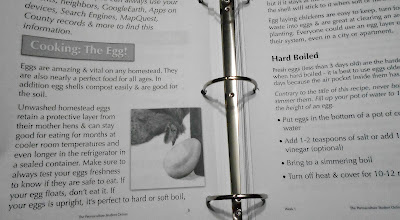Y'all know that we love to incorporate real-world learning into our homeschool here! It's not just cooking and adulting, but getting dirty with the garden and animals....all that in addition to the regular school curriculum. When we stumbled upon what we are dubbing Homestead Science, it delighted our youngest (who is not traditionally-school-minded) to no end! It might be just what you've been looking for, too...
The Permaculture Student includes:
- Private Community Facebook Group for Students
- Unlimited Access to the Video Library
- Includes eBook versions of The Permaculture Student 1 textbook & workbook
- Hands-On Projects with Step-by-Step Directions & Video
- Open & self-paced course. Start anytime, take your time & enjoy the design!
- What you will learn:
- Permaculture Design - homes, landscapes, society, businesses & more
- Pattern Literacy
- Reading the Landscape
- Seed-to-Table Cooking
- Earthworks
- Seed Saving
- Composting, Compost Tea, & Extract!
- Food Preservation & Storage
- Students that complete and turn in all their design assignments (workbook) will receive a certificate of completion in the mail.
You'll receive the textbook in PDF format. You can choose to upgrade to a physical textbook, but we just used the digital one. We started to print it out, but sent it to our kindles instead...less waste and easier to access!
Inside the full-color textbook are vocabulary words, informational text, graphics, and beautiful illustrations to bring the concepts to life!
Each of the units is broken down into multiple videos, hands-on projects, workbook components, and reading from the textbook. In the picture above, each of those tiny squares is a unit cover...which makes it very easy to access your unit. We have the main page bookmarked, and are able to quickly find each day's work.
After watching the informational videos for the unit, you'll find a video guide to the workbook components and a video guide (or multiples) for each of the hands-on projects. In this unit, we are learning to use different types of flours to make homemade breads, pancakes, scones, and biscuits...yum!
The workbook features activities for all ages, including coloring pages for the younger children, but is more geared toward middle school and above. There are graphics for students to apply the concepts learned to their own property / land areas.
Critical thinking questions flesh it out for the upper grades, making them apply the concepts learned. In each unit, there is a food plant focus, such as the squash we see in the pages above. Students are learning to grown, preserve, and cook with these foods.
Each unit brings something different! In one, you are designing a microclimate, including looking around your own land (could be one acre, could be a small lot around your home) and learning about the things that you already have nearby and finding new ways to make the land work for you. In the next unit, you might be learning about how to raise chickens and cook eggs six ways from Sunday!
Our son - who writes over at Xander's Farm - has long shown a propensity for the outdoors. He likes working with his hands, and started his own chicken business in elementary school. It was his idea to try out this course, as he's most likely not going to follow the traditional route of Biology, Chemistry, and Physics through high school. He knows what he wants, and one of the beautiful things about homeschooling is that we are able to tailor his learning experience!
 I would count the course as one semester of high school or (with some more hands-on activities) a full year of middle school. That said, there is an Advanced Permaculture course that you can take, too, if your student is really into it. What we are doing is filling out that second semester of science - because the transcript says Homesteading Science - with the Homesteading Course from SchoolhouseTeachers. Printables and some how-to videos are included with these weekly lessons...and it's all included with the 350+ other courses offered at SchoolhouseTeachers.com. We already have a family membership, and it is no additional cost, plus these two courses really complement each other well!
I would count the course as one semester of high school or (with some more hands-on activities) a full year of middle school. That said, there is an Advanced Permaculture course that you can take, too, if your student is really into it. What we are doing is filling out that second semester of science - because the transcript says Homesteading Science - with the Homesteading Course from SchoolhouseTeachers. Printables and some how-to videos are included with these weekly lessons...and it's all included with the 350+ other courses offered at SchoolhouseTeachers.com. We already have a family membership, and it is no additional cost, plus these two courses really complement each other well!Right now, the Permaculture Student is on sale for 60% off! Snag this unique course today and give your homeschool a serious real-world upgrade!






























.jpg)























